As the spring landscape stirs into life, hedgerows and fields are briefly scattered with gold. Not buttercups, but their early cousins, celandines, known until recently as Ranunculus ficaria but now renamed Ficaria verna.
These glossy flowers are charming, perky and a boon for insects yet, in the garden, they are not universally welcome. “Celandines are a British native plant and there are two subspecies in the UK,” explains Joe Sharman, of Monksilver Nursery in Cambridgeshire. “Ficaria verna subsp. verna is found on banks and ditches – it is vigorous and weedy and spreads easily, so it can be invasive. But Ficaria verna subsp. fertilis is a plant of ancient grassland and undisturbed meadow. It is smaller and much better behaved.”
Garden cultivars are selected from this second group, and are predominantly variations on the wild type, with gold or orange flowers and rounded, green or purple leaves. But Joe’s resolution to improve on this situation has led to a range of exciting new plants that are as hardy as they are decorative. “As a breeder you aim to introduce something that is unique and distinctive,” says Joe. Discover some of the lesser celandines he has bred below.
1
Ficaria verna ‘Jacqueline’
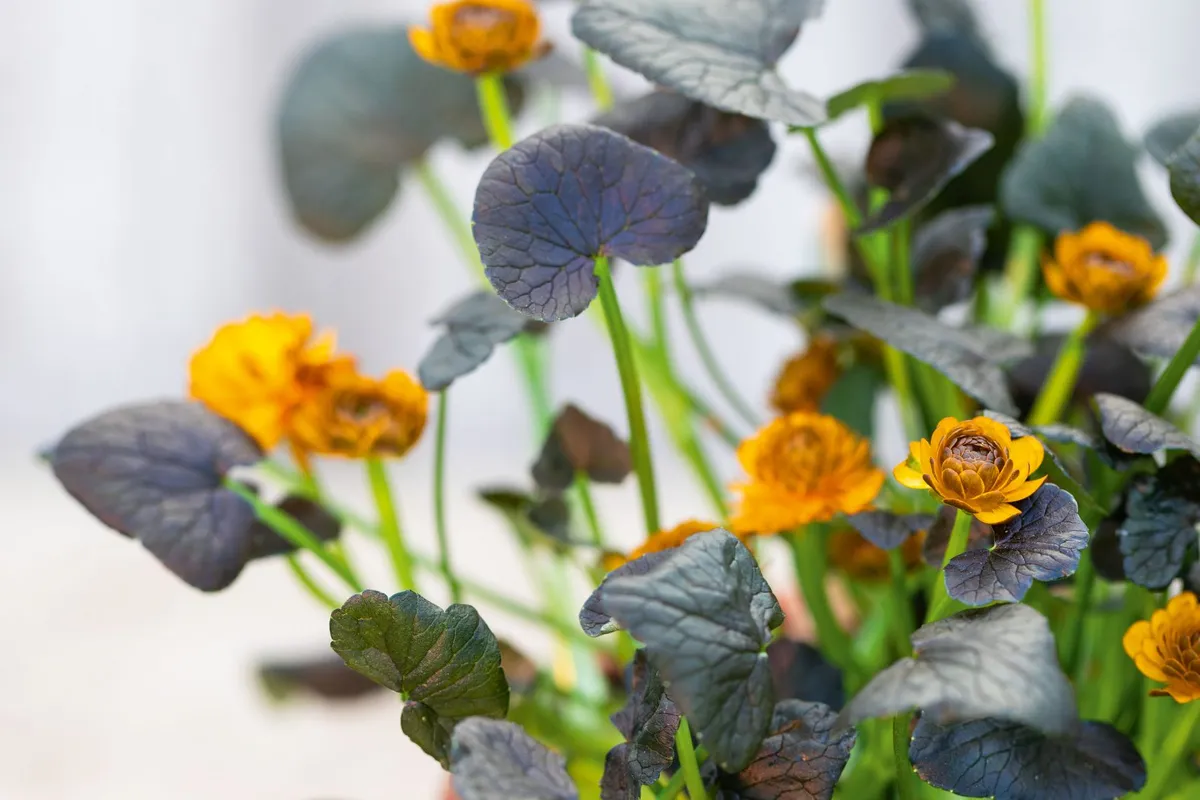
A striking plant with double orange flowers and rich, almost inky-purple leaves. The result of a cross between ‘Coppernob’ and ‘Double Bronze’, it is that rare plant-breeding success – the desired outcome at the first attempt. 10cm. RHS H7, USDA 4a-8b.
2
Ficaria verna ‘Anita’
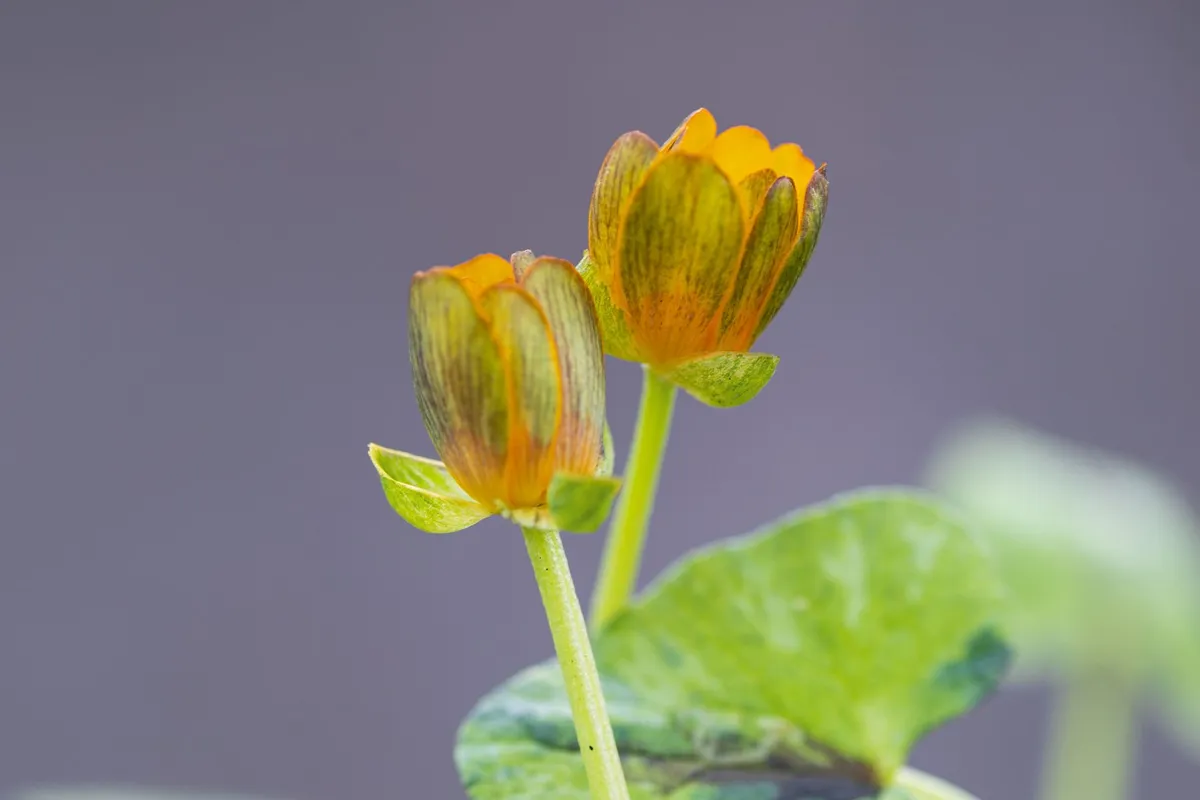
Has delicately marbled, pale-green leaves. Discovered by plantsman Richard Bashford, it is, so far, the only celandine that has both orange flowers and variegated foliage.
15cm. RHS H7, USDA 4a-8b.
3
Ficaria verna ‘Florence’
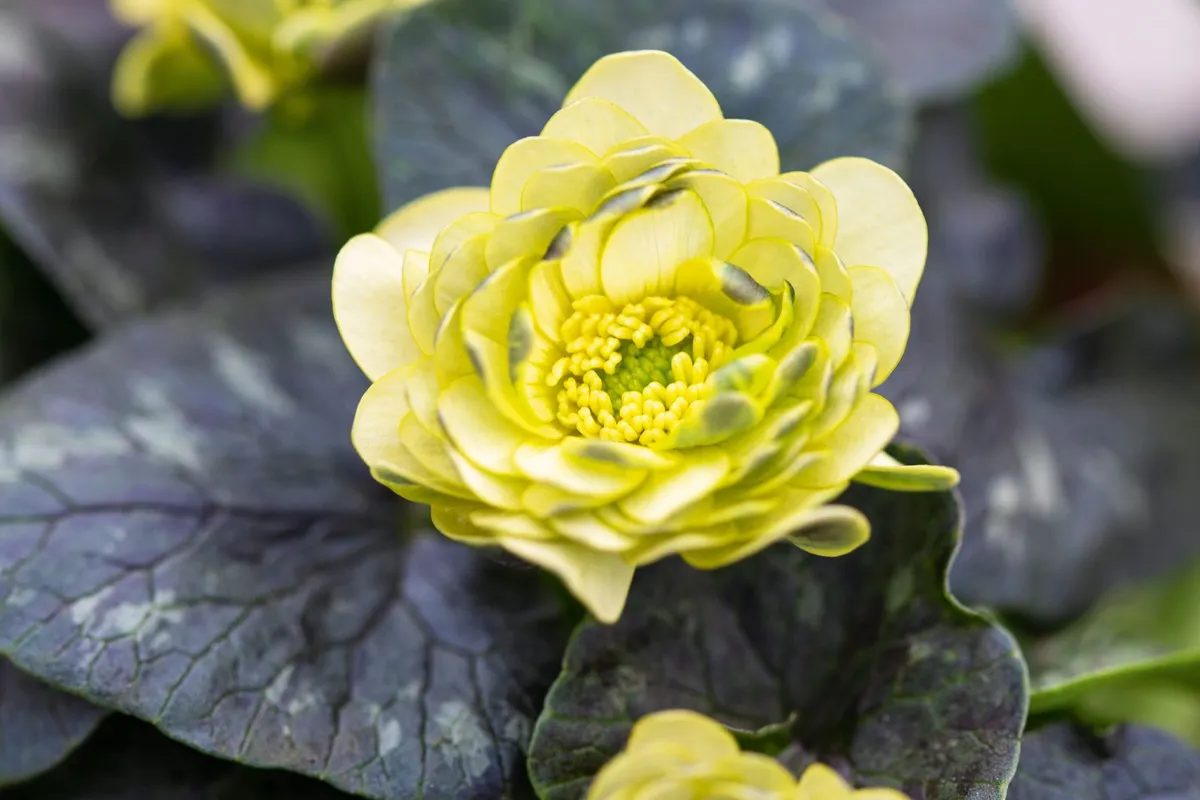
The second distinctive seedling from the cross that produced ‘Sylvie’, appearing two years later and with a similar double cream flower, but with leaves that are a stronger and more juicy shade of purple. 10cm. RHS H7, USDA 4a-8b.
4
Ficaria verna ‘Nathalie’
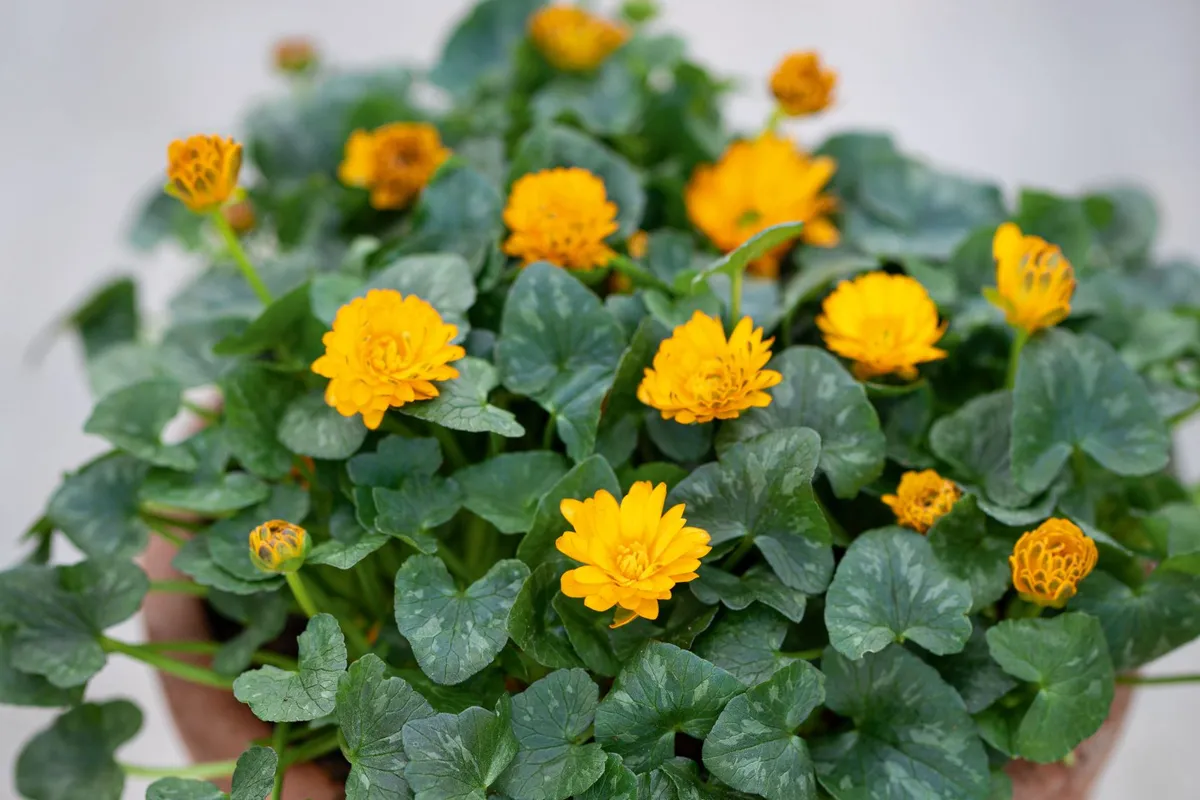
The first of Joe’s French Ladies series and named for a student who had worked at Monksilver Nursery. The plant is relatively dwarf and the neat double flowers shine like gold stars over the green foliage. 7cm. RHS H7, USDA 4a-8b.
5
Ficaria verna ‘Collarette’
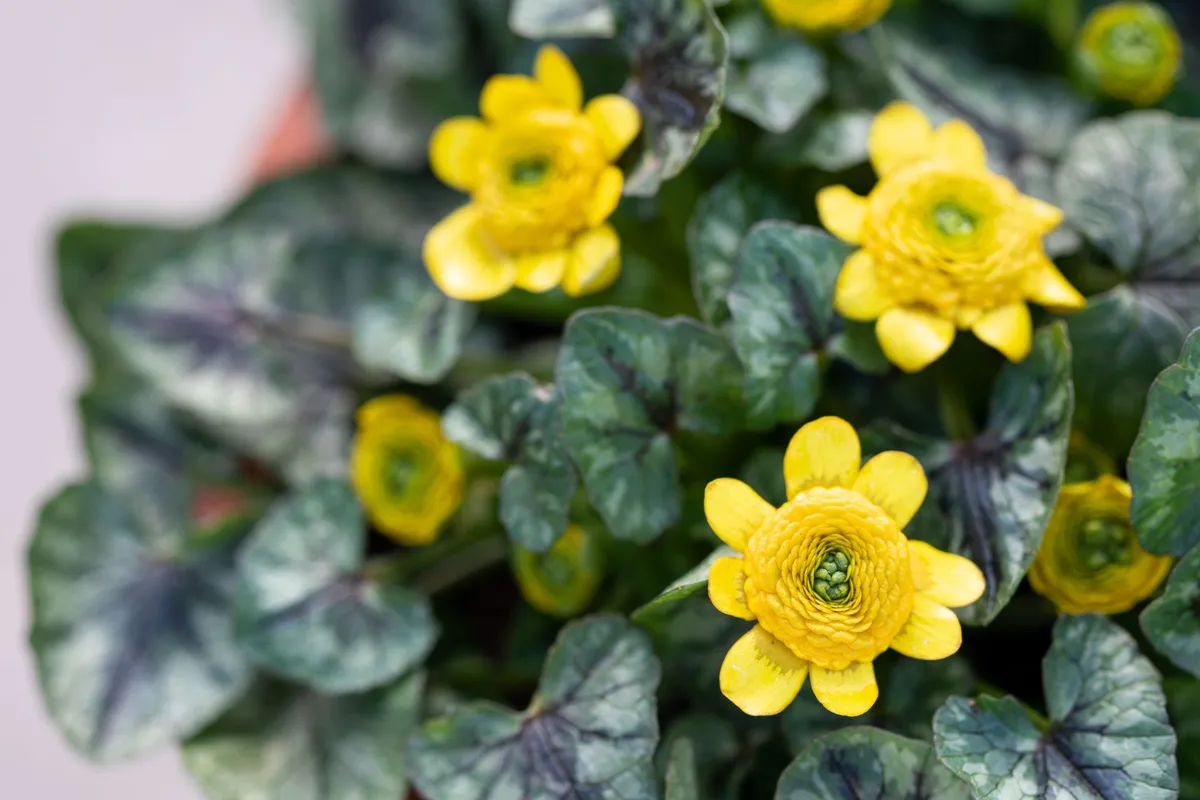
An older celandine cultivar with a tight central boss surrounded by a ruff of looser petals, borne over marbled purple-and-silver leaves. Hardy and easy to grow, it makes good groundcover and, like many double flowers, it is sterile. 10cm. RHS H7, USDA 4a-8b.
6
Ficaria verna ‘Angele’
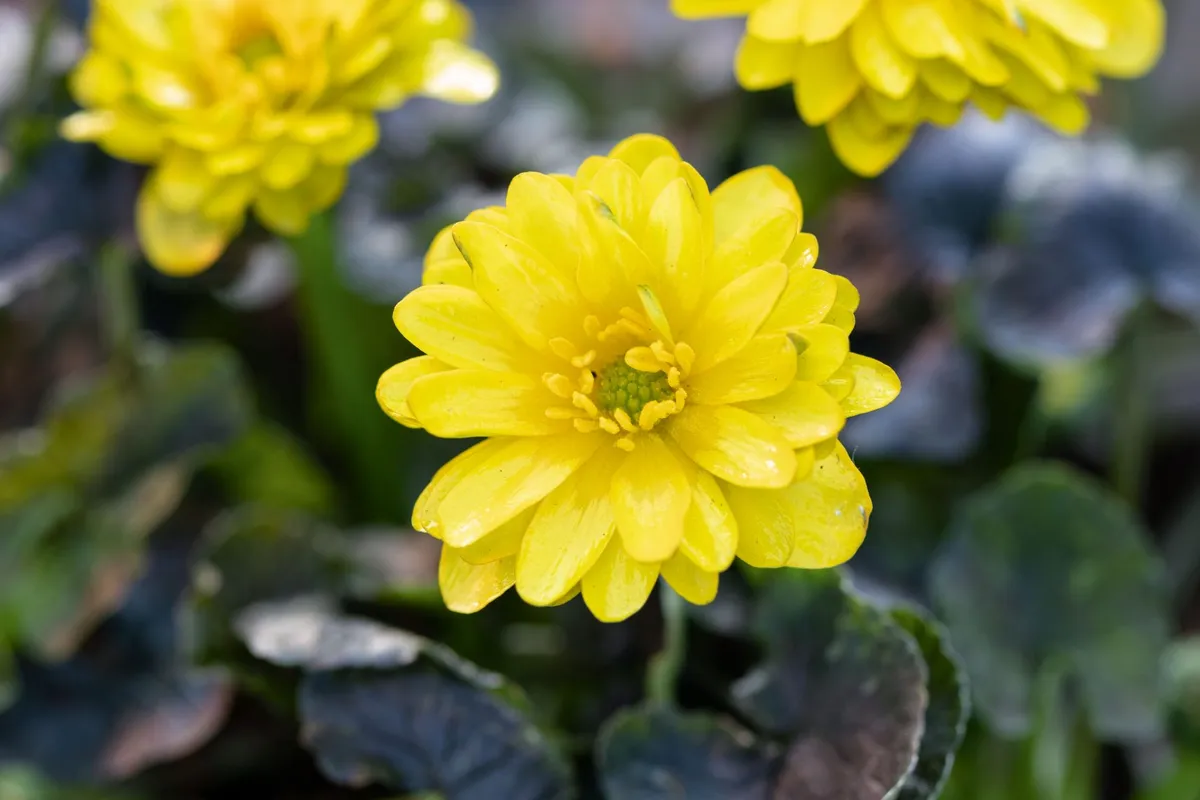
Not bred as part of a deliberate programme of hybridisation. Instead, it is a distinctive form that arose spontaneously in the garden of renowned plantswoman Angela Whinfield, and named by Joe Sharman in her honour. 10cm. RHS H7, USDA 4a-8b.
7
Ficaria verna ‘Snow Bunting’
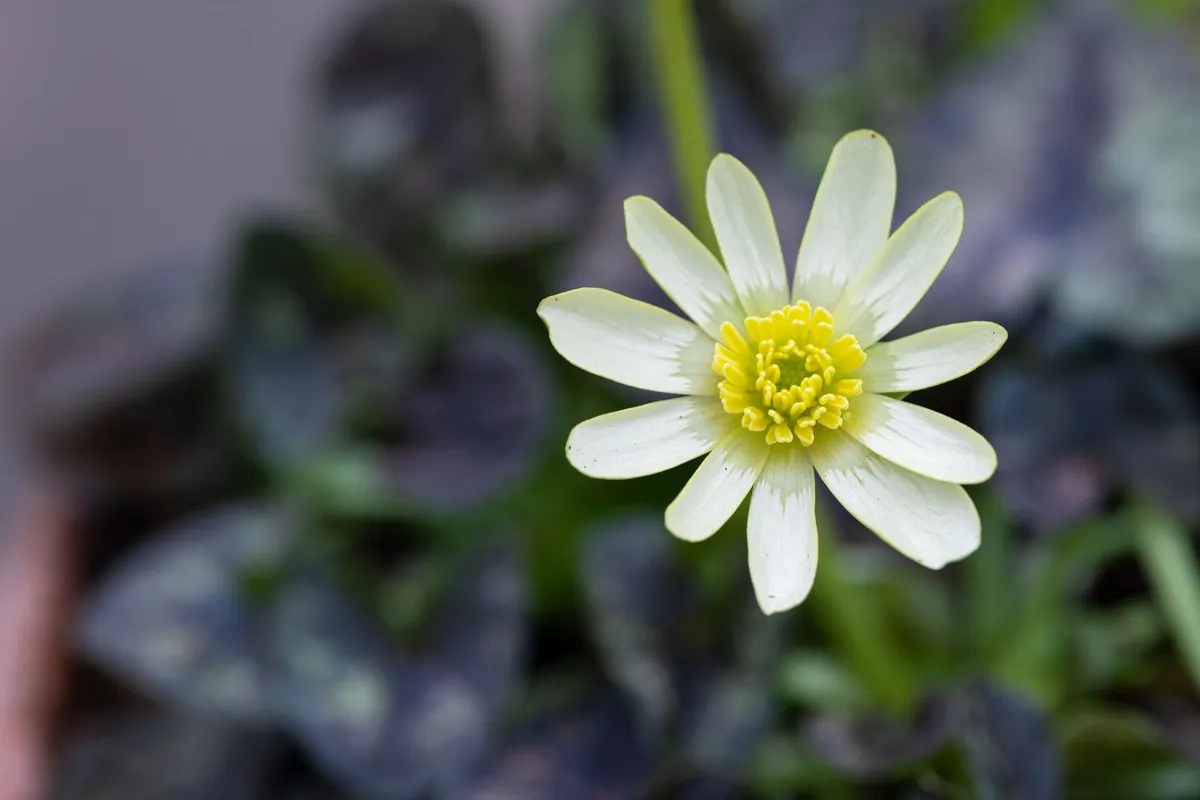
A dainty and delicate little plant, with white-blonde single flowers that are beautifully set off by the silver-and-bronze marbled foliage. 10cm. RHS H7, USDA 4a-8b.
8
Ficaria verna ‘Claudine’
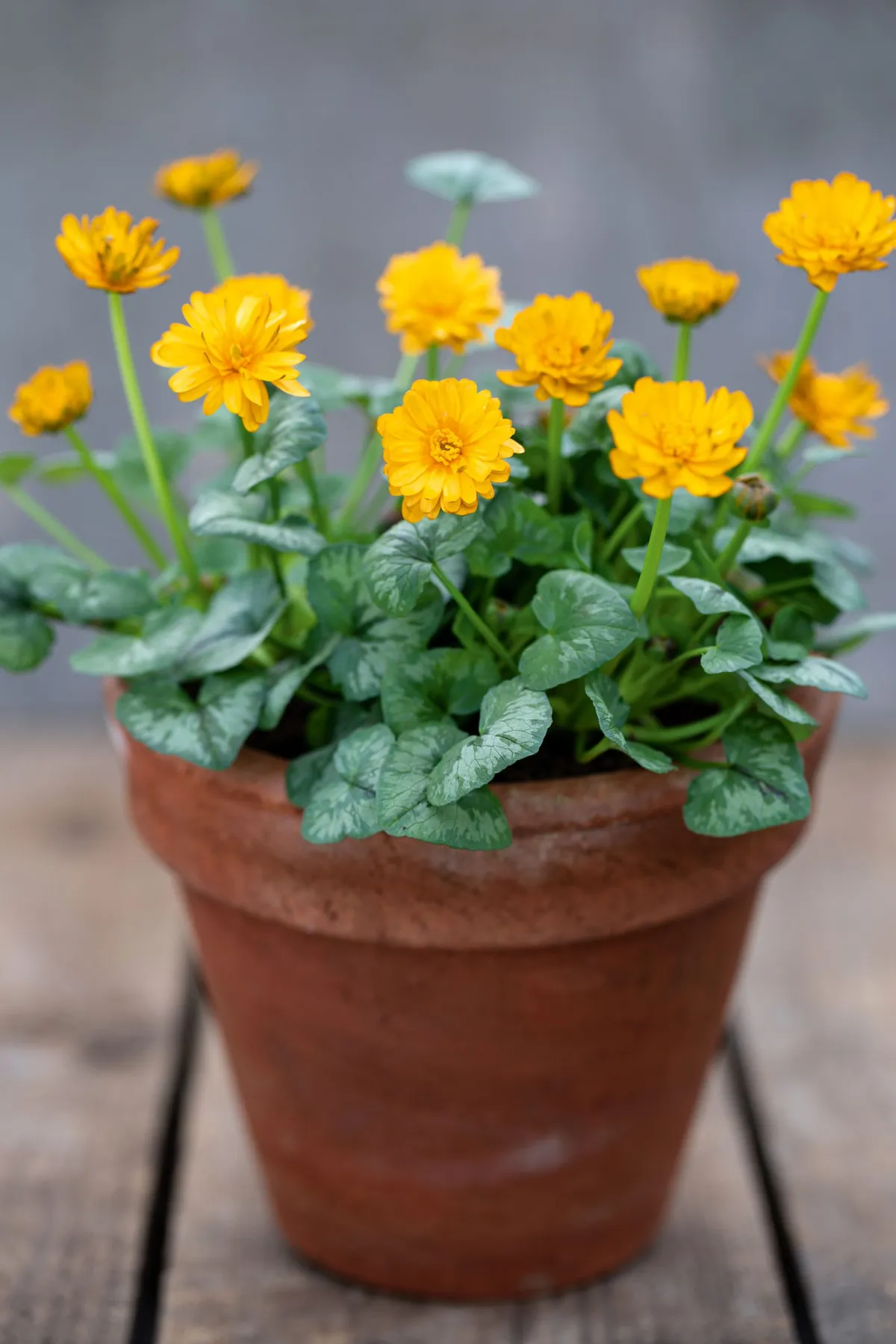
Ficaria verna ‘Claudine’ The orange-gold flowers, carried over marbled foliage, make this a useful mid-spring filler, that puts on a brilliant show then vanishes beneath the soil for summer. One of Joe’s French Ladies series. 10cm. RHS H7, USDA 4a-9b.
9
Ficaria verna ‘Monique’
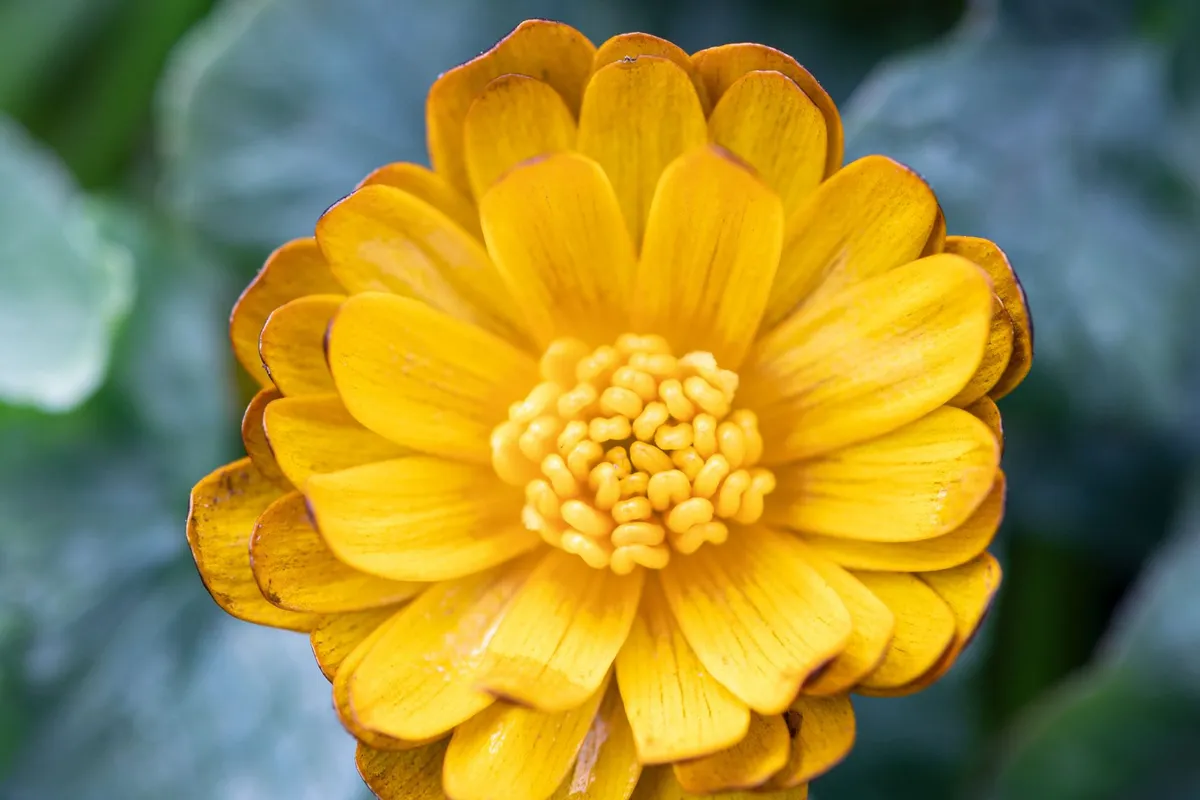
One of the distinctive double seedlings to emerge from Joe’s initial hybridisation experiment – and one of his French Ladies series, in which he crossed Ficaria verna ‘Double Bronze’ with Ficaria verna Aurantiaca Group. 10cm. RHS H7, USDA 4a-9b.
10
Ficaria verna ‘Sylvie’
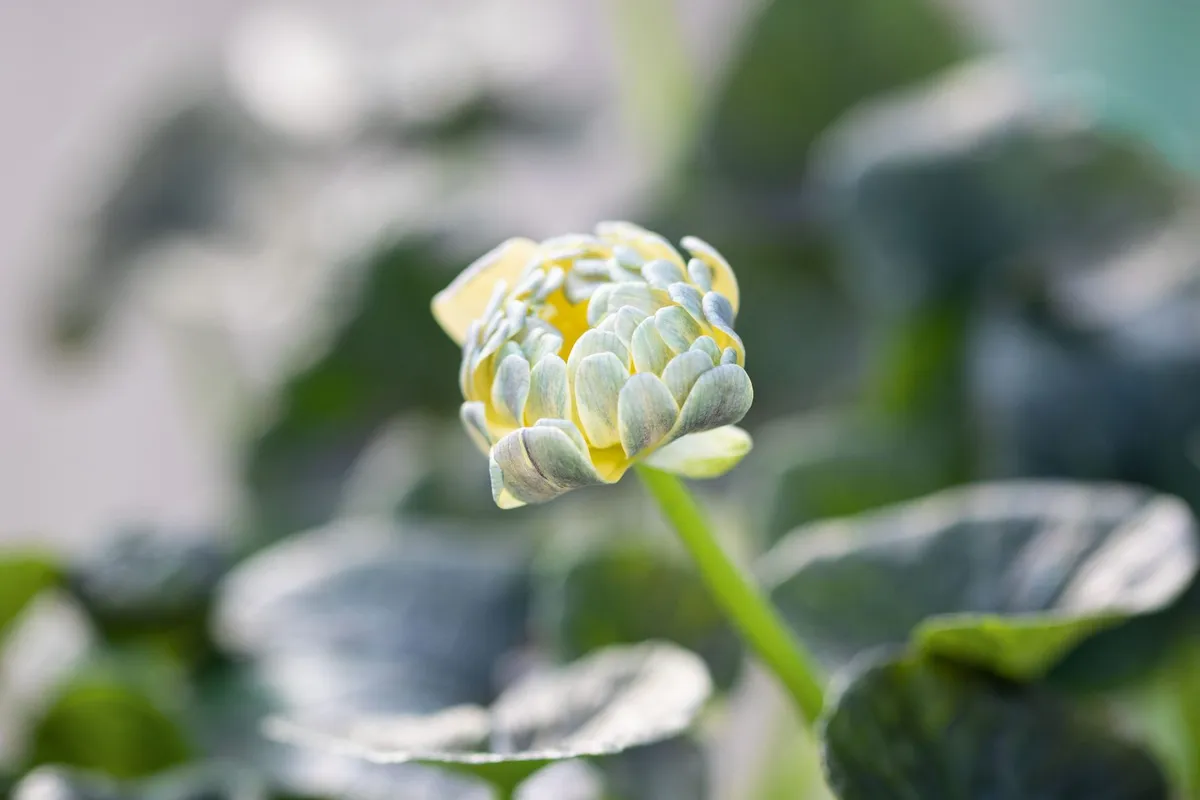
The result of a drive to achieve a plant with a double, cream-coloured flower and dark foliage. In this case the leaves are an attractive dusky-purple. 10cm. RHS H7, USDA 4a-8b.